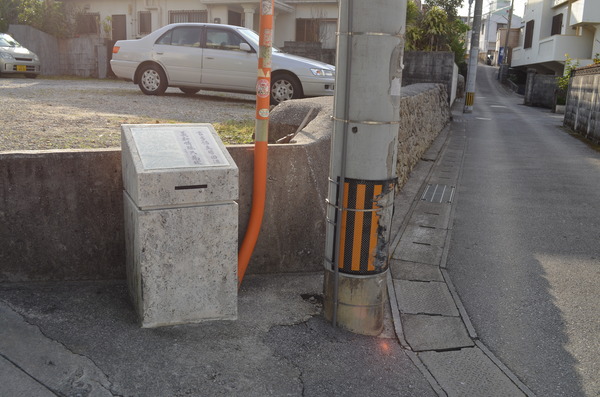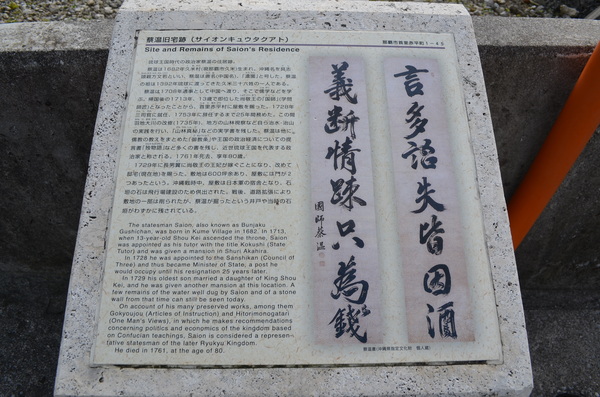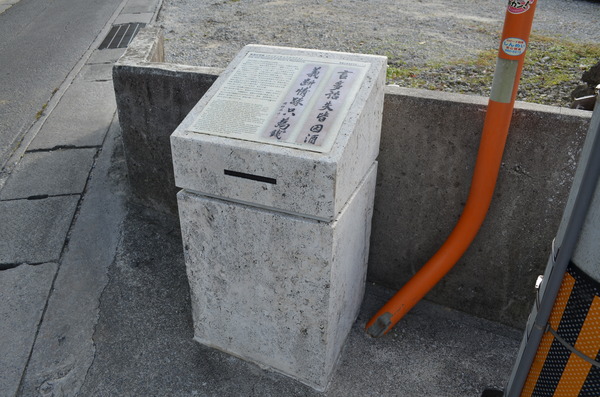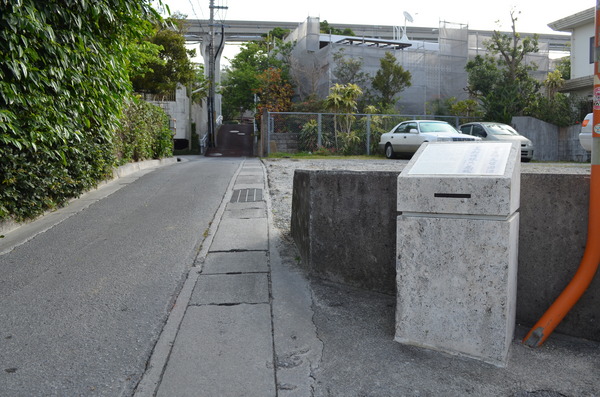Site and Remains of Saion’s Residence
History





Remains of Saion’s Residence, a politician of the Ryukyu Kingdom era.
Basic information
- Address
- 903-0811 1-45 Akahira-cho Shuri Naha Okinawa
- Business hours
- Nothing in particular
- Close day
- Nothing in particular
- Charge
- Free
- Parking
- None
- Access information
- A 5-minute walk from the ”Yui Rail" station Gibo.
Additional Information
- Academic information
- Here lie the remains of Saion’s Residence, a politician of the Ryukyu Kingdom era.
The statesman Saion was born in Kume Village, in 1682. His Okinawan name is Gushichan Oyakata Bunjaku and Chinese name is Saion, also known as Tanen. The ancestor of Saion is one of the “Kume 36 Sei” (The 36 professional artisans), who immigrated from China, in 1392.
Saion made a voyage to China as an interpreter, and learned Jugaku (Confucianism). In 1713, when 13-year-old Shou Kei ascended the throne, Saion was appointed as his tutor with the title Kokushi (State Tutor) and was given a mansion in Shuri Akahira. In 1728, he was appointed to the Sanshikan (Council of Three) and thus became Minister of State, which he served for 25 years. During his tenure, he upgraded the Haneji River (1735), inspected the mountain forests, and implemented floods controls, and then wrote the Sanrinshinpi (how-to book) about it. On account of his many preserved works, among them, the Gokyoujou (articles of instruction) and Hitorimonogatari (One Man’s Views), in which he makes recommendations concerning politics and economics of the kingdom based on Confucian teachings. Saion is considered a representative statesman of the later Ryukyu Kingdom. He died in 1761, at the age of 80.
In 1729, his oldest son married a daughter of King Shou Kei, and he was given another mansion at this location. The land was about 2,000 square meters, and there were two gates. In the war, this mansion was used as a dormitory for Japanese troops, and the stones from the stonewall were used for building the airport. After the war, although a part of this location was removed, a few remains of the water well dug by Saion and of a stonewall from that time can still be seen today. - Quote
- Naha City Museum of History
